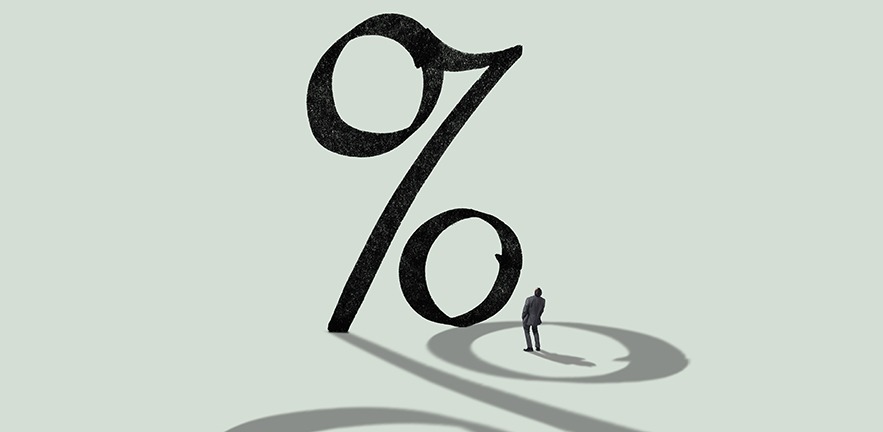Inflation hit decades-long highs in 2022, and easing is historically very slow from such levels, says new report co-authored by Elroy Dimson of Cambridge Judge Business School.

Inflation has historically proved very sticky when it reaches levels of 8% or more as it has in many developed countries over the past year, says a new report published by Credit Suisse and co-authored by Professor Elroy Dimson of Cambridge Judge Business School.
The report suggests caution in accepting International Monetary Fund (IMF) forecasts that inflation will cool rapidly in advanced economies to 4.4% in 2023 and 2-3% in 2024, from inflation peaks that in 2022 reached 9.1% in the US, a 41-year high; 11.1% in the UK, a 42-year high; and 10% in Germany, a 71-year high.
Such forecasts are “optimistic in the light of history”, according to one recent study cited in the 15th edition of the Credit Suisse Global Investment Returns Yearbook. “Reverting to 3% inflation […] is easy from 4%, hard from 6% and very hard from 8% or more. Above 8%, reverting to 3% usually takes 6 to 20 years, with a median of over 10 years.”
Why central banks need to avoid complacency and learn lessons
The report looks at all main asset categories including equities, bonds and bills in 35 countries, most of them over a 123-year period since 1900, to provide a historical overview of comparative investment returns.
There have been “long intervals when inflation seemed conquered” during that period, the report says, including an average inflation of just 1.5% in developed countries during the first 21 years of this century.
Yet such periods of low inflation can “breed complacency”, the authors say. “When inflation picked up in 2021, the so-called ‘team transitory’ argued that this was temporary, caused by the rapid pickup in demand and supply chain bottlenecks after the COVID lockdown. Thinking this would normalise, the US Federal Reserve waited until March 2022 to raise interest rates.
“Hopefully, central banks have learnt from this,” the report says. “However, it is important to be reminded just how persistent inflation has proved historically.”
Equities won’t always serve as a hedge against inflation
The report is authored by Professor Paul Marsh and Dr Mike Stanton of London Business School, and by Professor Elroy Dimson of Cambridge Judge Business School, who is Chairman of the Centre for Endowment Asset Management at the Business School.
The report urges reluctance in assuming that equities will always act as an effective hedge against inflation.
“Equities performed especially well in real terms when inflation was low. High inflation impaired performance and deflation led to lower returns than on government bonds,” the report says. “Despite this, it is widely believed that stocks must be a good hedge against inflation to the extent that they have had long-run returns that were ahead of inflation. However, their high ex-post return is better explained as a large equity risk premium. It is important to distinguish between beating inflation and hedging against inflation.”
Equities have outperformed bonds and bills over the past 123 years
Among other findings in the 272-page report:
- Equities have performed best over the long run. Over the last 123 years, global equities have provided an annualised real USD return of 5.0% versus 1.7% for bonds and 0.4% for bills.
- Since 1900, Australia has been the best performing stock market in real USD (US dollars) terms with an annualised real return of 6.43%, very closely followed by the USA, at 6.38%.
- The US stock market accounts for 58% of total world value (on a free-float, investible basis), which is over 9 times as large as Japan, its closest rival.
- By the end of 2022, average inflation across the Yearbook countries was 8%, 19 times higher than at the end of 2020.
- After 4 decades of bonds providing equity-like returns, the law of risk and return reasserted itself in 2022. Bonds had their worst year ever in the US, UK, Switzerland and across developed markets.


